This is how Upper Structure Triads work for Jazz Piano
‘Upper Structures’ are a type of chord voicing used by jazz pianists for dominant 7 chords (e.g. 'C7', 'F7', 'Bb7').
Let's begin by demonstrating on a C7 chord (C E G Bb):
In your left hand, play the chord’s root, 3rd and 7th - so for C7 that would be C E Bb.
Then in your right hand, you can choose from a variety of major and minor triads (mostly major chords) built from specific scale degrees above the chord.
Let’s start with a major triad built from the chord’s 2nd in our right hand (that's D major - D F# A):
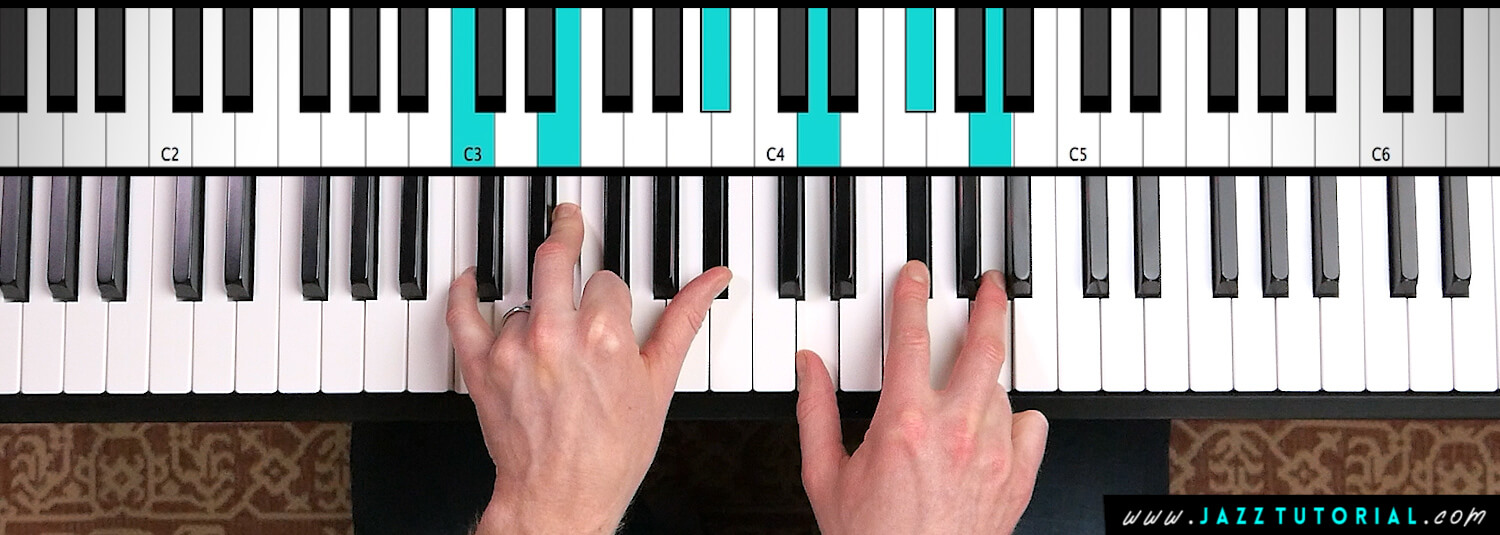
By playing D major in my right hand, I'm adding the 9th, #11th and 13th to my C7 chord.
Let’s take another example for C7 - keep your left hand the same (C E Bb) but this time let's play a major triad built from the chord’s minor 3rd in my right hand (that's Eb major - Eb G Bb):
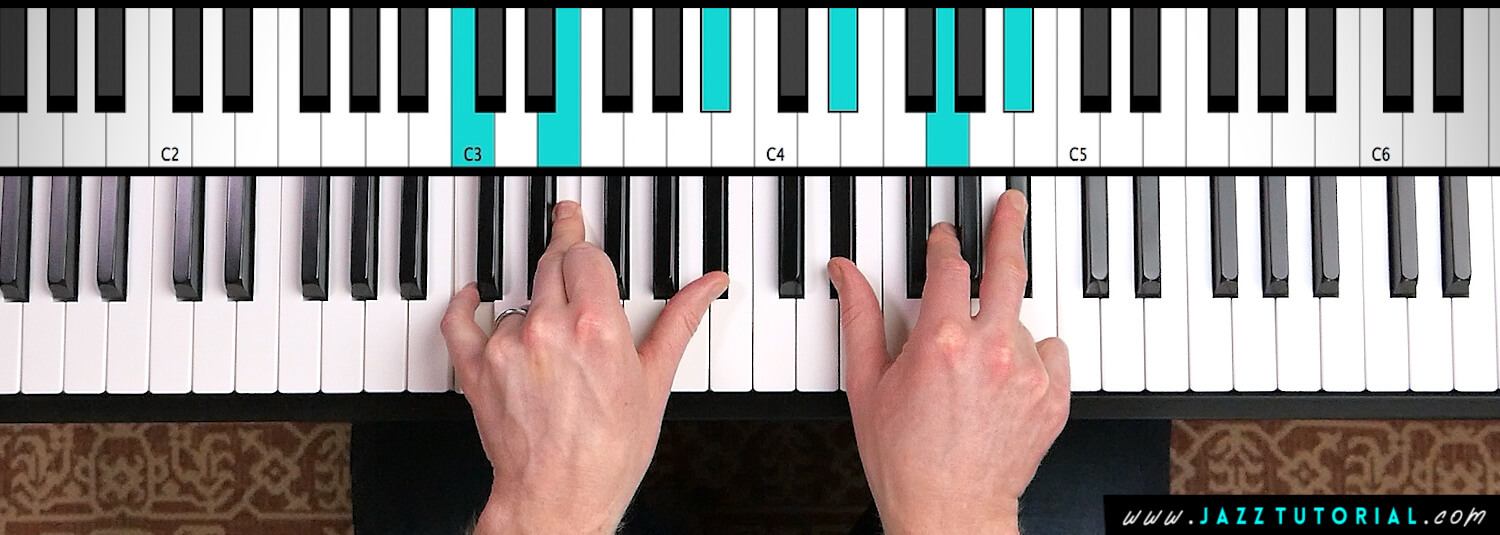
By playing Eb major in my right hand, I'm adding the #9th, 5th, and minor 7th to my C7 chord.
Now let’s take another example for C7 - this time let's play a major triad built from the chord’s minor 6th in my right hand (that's Ab major - Ab C Eb):
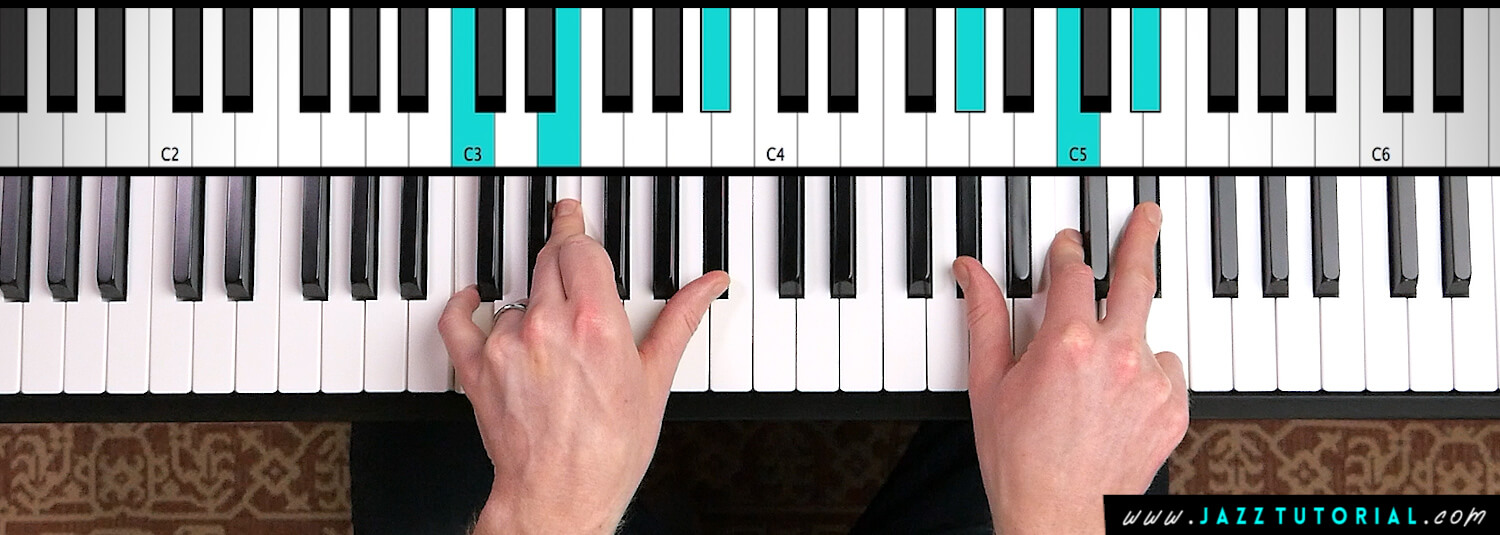
By playing Ab major in my right hand, I'm adding the b13th, root, and #9th to my C7 chord.
And one final example for C7 - keep your left hand the same (C E Bb) but this time let's play a major triad built from the chord’s major 6th (that's A major - A C# E):
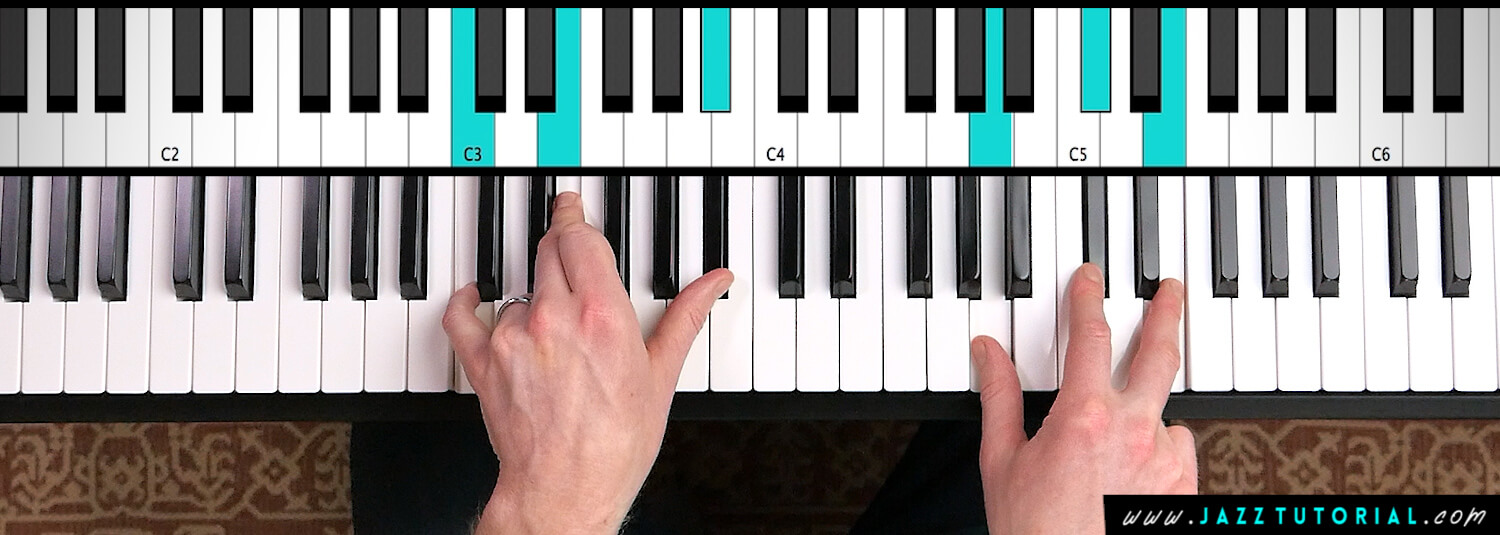
By playing A major in my right hand, I'm adding the 13th, b9th, and 3rd to my C7 chord.
FREE RESOURCE: For more jazz piano chord voicings, you can download my free ‘Jazz Piano Chord Voicing Guide' which shows you 5 types of chord voicing used by professionals (shells, 4th voicings, rootless voicings, and more): Click here to download
Using Chord Inversion
Upper Structures are flexible - you can play the right hand’s chord in any inversion. So instead of playing the chord as 1 3 5 (D F# A), you could play it as 3 5 1 (F# A D) or 5 1 3 (A D F#).
Look at how I've inverted my right hand's A major triad below - this voicing would be ideal if the melody note was the 13th (A):
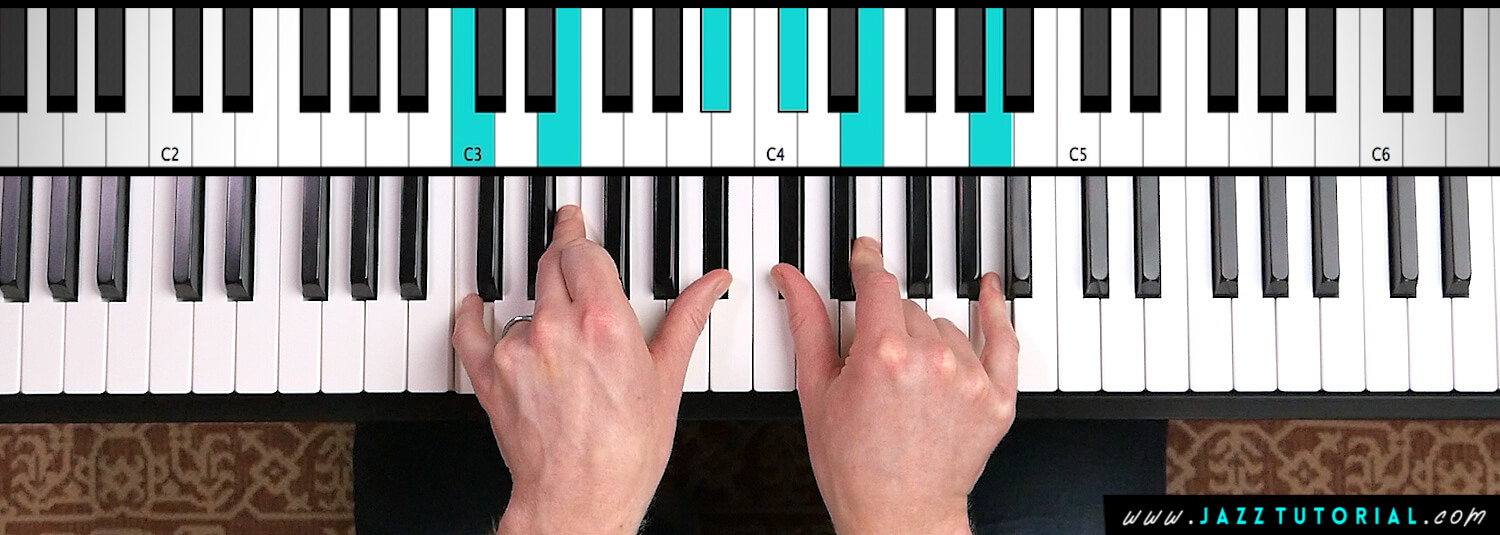
Using chord inversion is useful when you’re trying to get the melody note to be the top note of your chord voicing.
To give you an example, here’s how I might voice the first two chords of ‘Stompin’ at the Savoy’ (C7 - F maj 7):

Notice that for the C7 chord above, I’m playing my right-hand's A major triad in inversion (C# E A instead of A C# E) so that the melody note (A) is at the top of my voicing.
'Sawn-Off' Upper Structures
You can also ‘saw off’ the top note of any Upper Structure voicing - which can also be helpful when you want to place the melody note at the top of your voicing.
For example, if you have C7 and the melody note is the #11 (F#), then you could play the D major triad we've looked at in your right hand (D F# A), but you would ‘saw off’ the A:
C E Bb / D F#
Doubling in Octaves
You can also double your right hand’s bottom note up an octave. So if you’re playing D major in your right hand, you could play it as D F# A D to create a bigger sound:
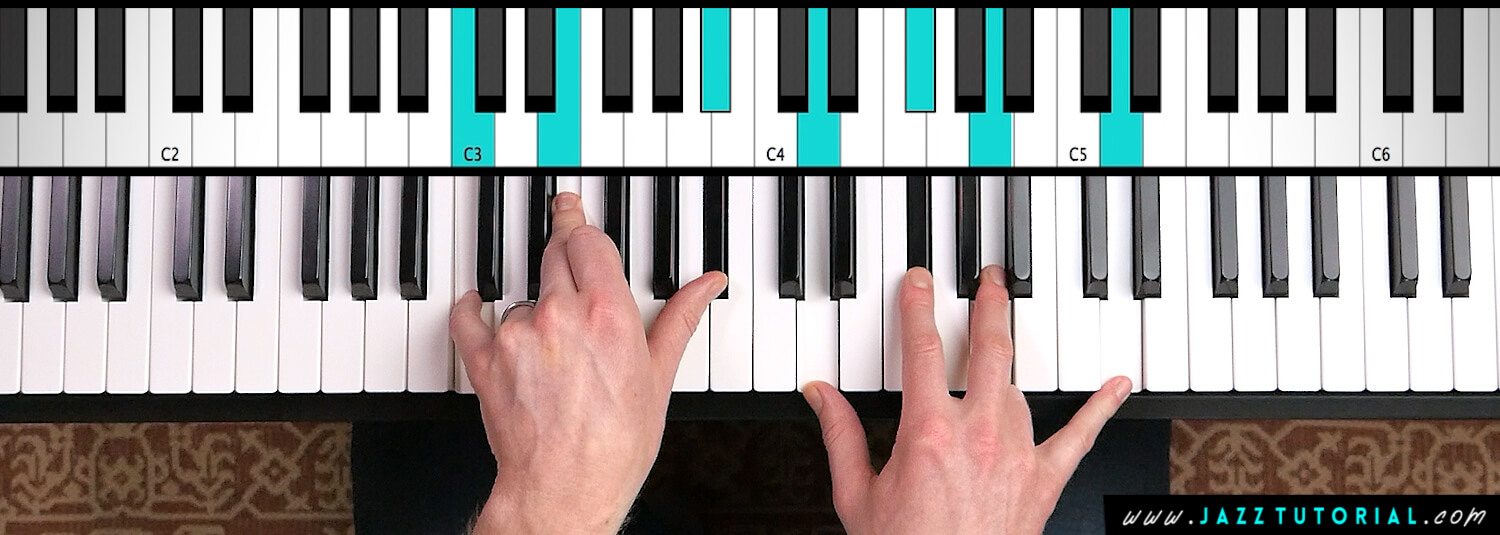
C E Bb / D F# A D
My Two Favorite Upper Structures
So far, we've looked at four upper structures - each one is a major triad built from a different scale degree, and these triads can be inverted, 'sawn-off', and doubled in octaves:

However, of these four upper structures, there are two which I use the most by far:
-
D maj / C7 - ideal when you want to create a V7#11 sound (great for endings).
-
A maj / C7 - ideal when you want to create a V7b9 sound.
If you remember just two Upper Structures from this lesson, remember these!
Homework Challenge
Practice building Upper Structures for all twelve V7 chords (C7 - Db7 - D7 - Eb7 - E7 - F7, etc. Always count to the correct scale degree before building your right hand’s triad - e.g. count to the minor 3rd, count to the minor 6th, count to the major 6th, etc. Do not try to memorize the note names, e.g. 'A C# E'.
Next, play through the songs in your real book and look for opportunities to use Upper Structures. Any V7 chord can be voiced as an Upper Structure - look at what the melody note is in relation to the chord (e.g. '#11th', '5th', 'b13th' etc), and then choose a triad which contains the melody note in it. Finally, use chord inversion when needed to place the melody note at the top of your voicing.

RECOMMENDED SONGS: Misty, Cry Me A River, Girl From Ipanema, The Taxi Driver Theme, Invitation, Satin Doll, Stompin at the Savoy. Get my Real Books Guide (free).
Free Sheet Music
Can I send you 39 pages of Jazz Piano sheet music?
-
Includes '29 Jazz Licks' (sheet music)
-
'The Chord Voicing Guide' (ebook)
-
'Sweet Chord Progressions and Riffs' (sheet music)
About the Author
Julian Bradley is a Jazz pianist and music educator from the U.K. He has a masters degree in music composition and loves helping musicians learn Jazz piano and reach their music goals. YouTube channel.
